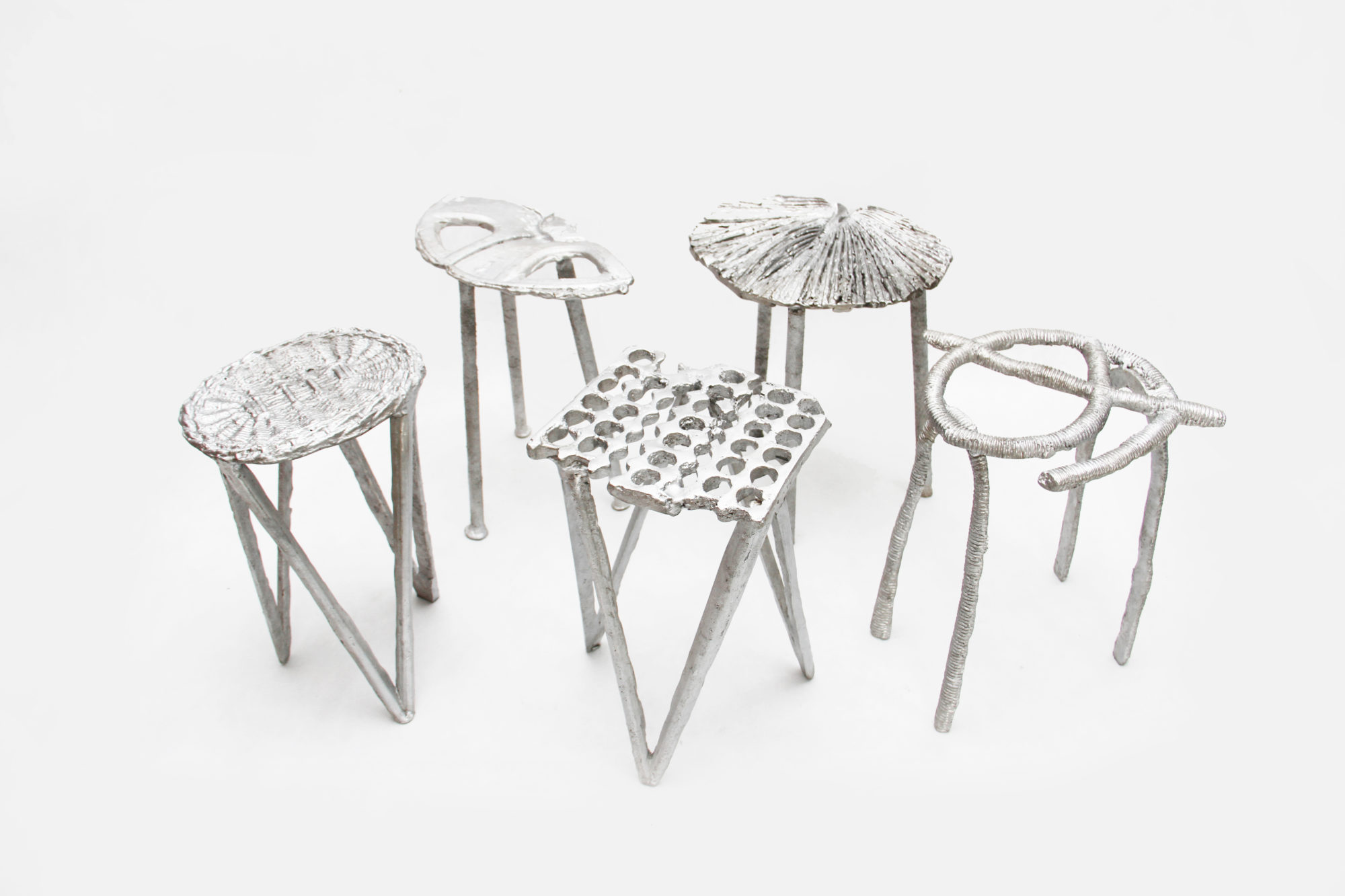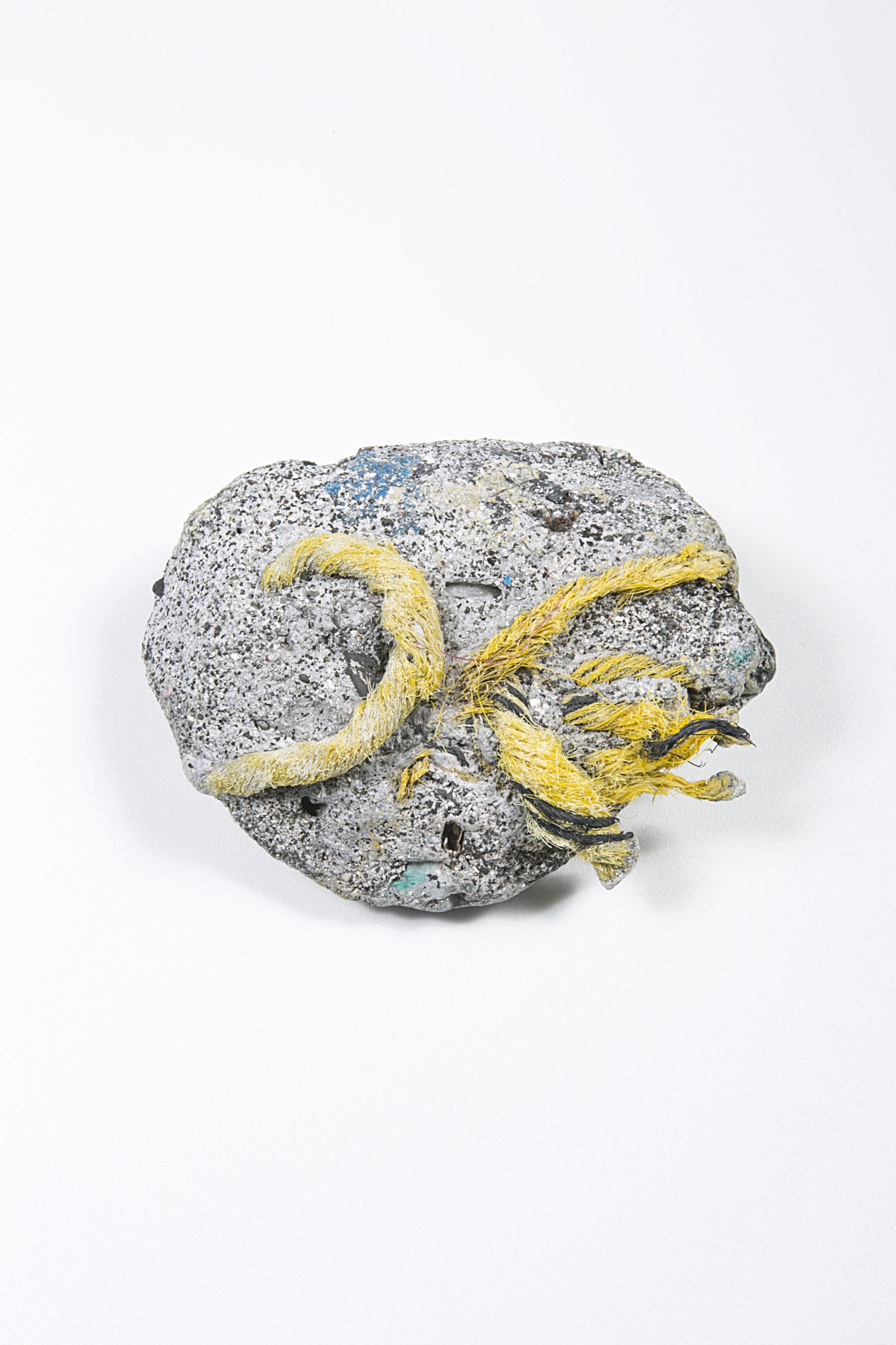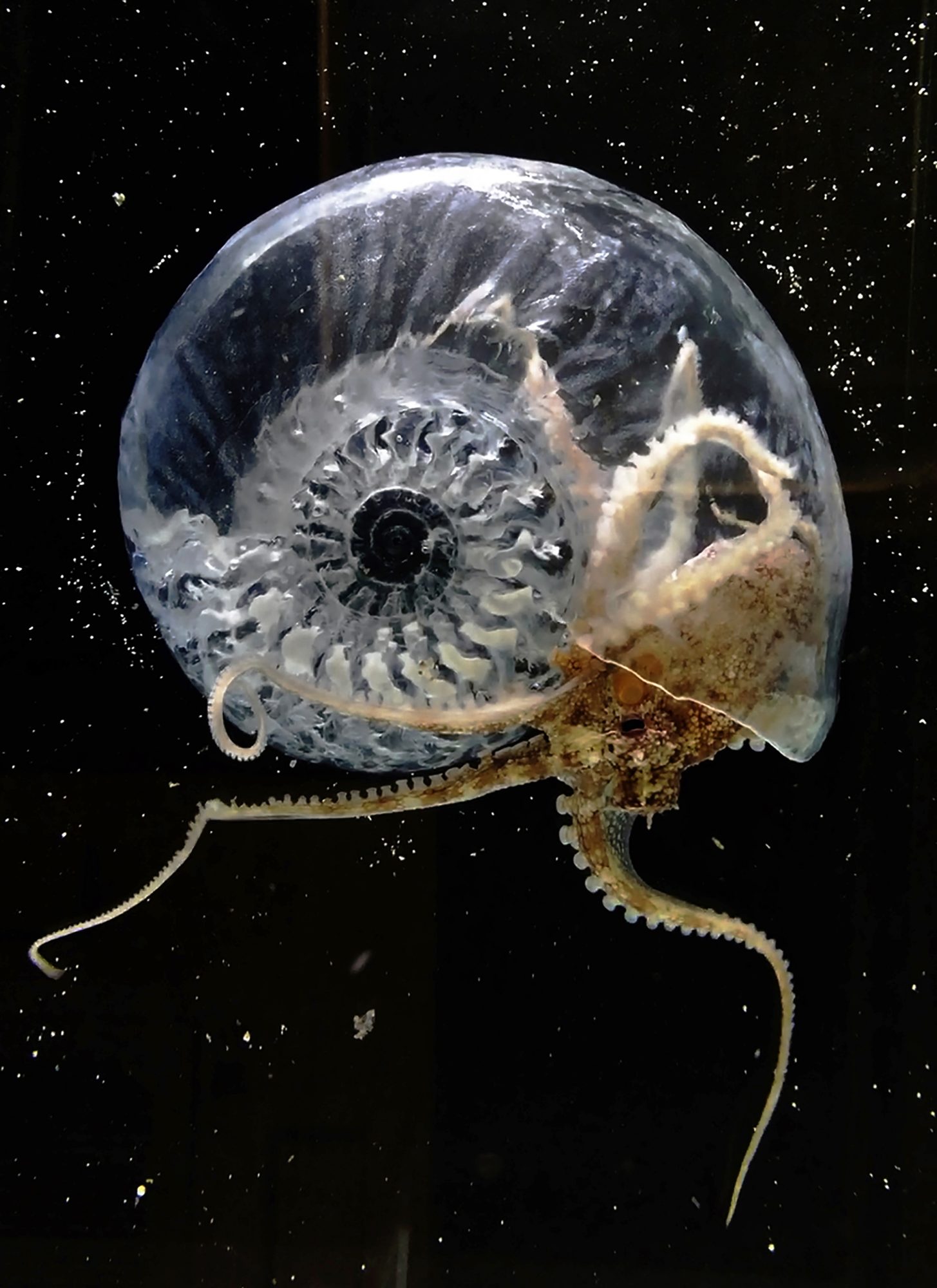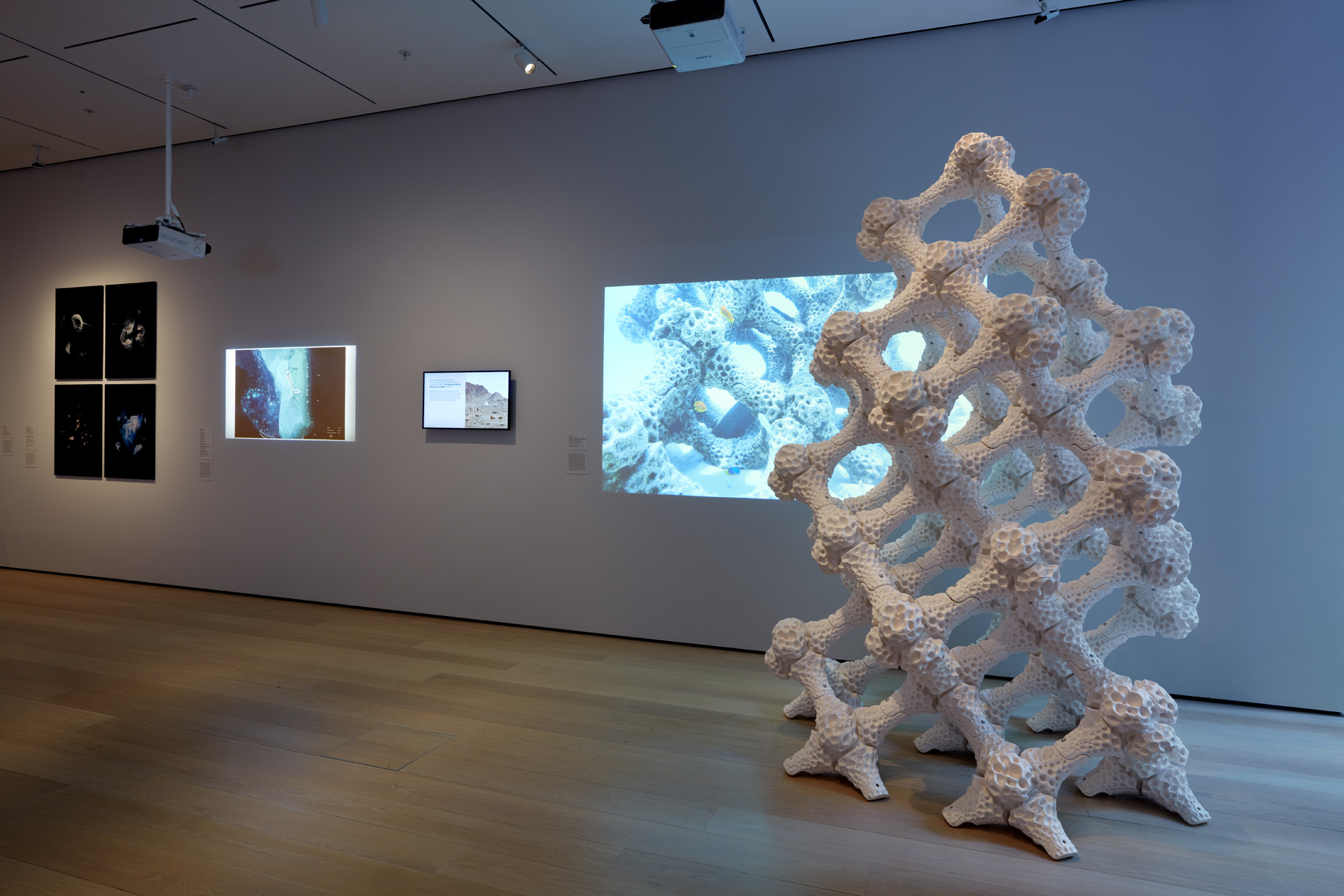Comprising a well-researched and geographically inclusive selection of design objects, documentation of offsite projects, and scientific testimonials to the earth’s accelerating ecological collapse, the Museum of Modern Art’s Broken Nature exhibition proffers an array of individually innovative ideas that, when considered in relation to the situation at hand, ultimately prompt more concerns for the future of design as we now know it, rather than (as the catalog lays out) a clear ideological framework through which it might lead us into a less destructive future.
The show is installed on the MoMA’s public (free) ground floor gallery closest to 53rd Street in Manhattan, where floor-to-ceiling windows are situated across the street from and—in clear conversation with the bougie gleam of modern and contemporary design objects in the museum’s own design store.
Curated by Paola Antonelli, senior curator of the MoMA’s Department of Architecture and Design, Broken Nature proposes not so much of a reimagining of the structures that delivered us to this moment as pseudo-spiritual repentance to Gaia, suggesting that design can conceive a multitude of solutions to the exponentially accelerating forces of climate change while retaining the support of centralized wealth through the invention of environmentally conscious—yet still aesthetically pleasing—products. While transmuting the original 2019 exhibition in Milan (which was nearly six times larger) into one of the smallest galleries in the museum required the exclusion of some of the more sprawling or intricate projects, the selection on view at MoMA feels too sanitized for an exhibition about the literal apocalypse.
One of the best examples of restorative design included in the exhibition is the Maldives/Sandbars project (2018–19), which uses the ocean’s own wave patterns to encourage the regrowth of sandbars around the that have been worn away from rising sea levels. The aerial photographs on display in the exhibition demonstrate the re-accumulation of sand beneath the lagoon, encouraged by strategically placed concrete structures anchored to the ocean floor, using the ocean’s own movements to rebuild the atoll’s natural defenses from flooding as they break up incoming waves.

Yet, much of the show’s language smacks of selective blindness to the scope and machinations of structural inequality, one of the biggest hurdles to comprehensive, collective action in the fight to slow climate change. In describing Alexander Groves and Azusa Murakami’s Palm Stool from the Can City project (2013), the catalog describes the catadores (trash pickers) of São Paulo as “breathing new life” into the materials they source from the landfill in their “artisanal enterprise” of creating jewelry or furniture from the city’s scrap. While the designers’ concept of a mobile foundry, cleverly constructed from local materials and used to create the aluminum furniture on view in the exhibition, is undoubtedly a useful one, the tired dynamic between an utterly disenfranchised caste of laborers and the appropriation of their practices by a privileged design studio is clearly present.
Aki Inomata’s Think Evolution #1: Kiku-ichi (Ammonite) (2016–17) provides another useful metaphor for the past and future of humans’ inhabitation of the earth: an HD video shows a small octopus exploring the interior of a clear resin 3D print of an ammonite fossil. In an earlier stage of their evolution, the notoriously clever cephalopods used to inhabit shells (similar to the behavior of a hermit crab) but eventually dispensed with this tendency in order to more efficiently evade predators, rendering Inomata’s video both a meditation on the generational transmission of instinctual behavior and a clever visual framework through which we might consider a de-evolution of our own preferred habitats.


Perhaps most affecting objects in the exhibition are those comprised of manmade materials and designed by nature—Kelly Jazvac’s Plastiglomerate (2013), a series of irregularly shaped lumps of variegated plastic, compressed and pressured to sedimentary rock-like density; one might think of the catalog’s call for “elegance under pressure,” an apt metaphor for precious gems, however, the Plastiglomerate are anything but elegant. Punctuated by flecks of neon-hued debris and tattered strands of castoff polymers, these objects feel more like coldly prognostic markers of the late Anthropocene than emphatically ominous evidence regarding the geological characteristics of an epoch whose outcome is yet unfolding. Examples of the series are well-placed just to the right of the entrance, establishing a logically coherent but rather hopeful node between the chic algae-based carafes from Studio Klarenbeek & Dros for Atelier Luma and Mandy Barker’s (2016).
The latter also focuses on the abundance of plastic detritus disrupting the planet’s natural processes, but on the microscopic level. The long-exposure photos take the format of the natural history plates created by 19th-century marine biologist John Vaughan Thompson, who amassed and documented an archive of plankton samples off the coast of Ireland. Barker’s iteration uses modern technology to capture much clearer pictures of the microorganisms populating 21st-century seas—sourced from the same location Thompson used, Cork Harbour—however, instead of plankton, the images exhibit microplastics. Consumed by plankton, these microscopic fragments of plastic bags, netting, and other debris make their way into every facet of the aquatic ecosystem from the bottom up.

While every work in the show was conceived in response to the climate crisis, the Plastiglomerates are the only truly “found” objects on view, representing humans’ permanent impact on the earth and invoking an eerie reassurance that the earth will endure long after we’re gone, and perhaps eventually recover from our presence. While their presence between the microscopic shards of polymer and the tastefully minimalist home goods makes a clear statement regarding the aesthetic and practical possibilities for transitioning away from synthetic materials, many of the objects’ sleek allure remain predicated upon and as yet inexorable from a global economy unlikely to de-escalate and refocus the parameters of production to an extent that will save the planet and its inhabitants (humans included) from a destruction of our own making.











